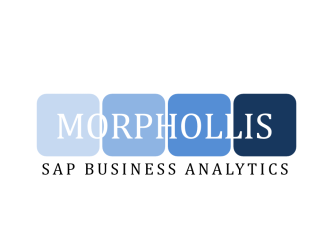Our reporting solutions combine the design and development of:
- Transactional reporting done in the SAP ERP system using the ABAP programming language
- Operational reporting done either in the SAP ERP system or in a connected SAP NetWeaver BI data warehouse
- Management reporting (tactical/strategic) done in SAP NetWeaver BI data warehouse
We also can offer basic Business Objects consultancy services for reporting and creation of universes in relation or not to the SAP NetWeaver BI product.
Proposed Solutions for Reporting (Data Warehouse)
Base assumptions
- Reporting Data Model is available and understood by the client
- Logical Data Models are described in detail and each object has been defined
- Blueprint corresponds to the time required for reviewing the Data Models, proposing the Data Flows, the Data Architecture and listing all objects required to build the solution
- Realization is the time necessary to build each object and the time necessary to perform unit testing with the data available in the Development system
- Final Preparation corresponds to the time necessary to perform testing of the objects during integration and user acceptance testing ; this is usually a guess figure that heavily depends on the client involvement, and assumes that only a quick review of the objects is performed before promoting the solution to the Production environment.
Complexity factors
The complexity factors for Business Intelligence solutions depend on whether the objects are activated from the standard Business Content, from the enhancements that might be required on top of the activation of the Business Contents or from the fact that the objects have to be custom-designed and built. Important criteria can be listed but heavily depend on the object itself:
- Number of attributes of an info object
- Hierarchy to be loaded
- Time dependency
- Number of info objects in the DSOs or in the info cubes
- Number of objects to be linked in info sets
- Complexity of the Reporting Data Model
- Number of dimensions in the info cubes
- Use of aggregates
- Use of multi-providers
- Selection on custom built data sources
- Creation of delta-enabled data sources
- Inventory-type scenarios using non cumulative key figures
- Number of formulas/selections used on the queries to be built
- Use of the cells editor to create queries
- Jump target functionality to other queries or to SAP ERP transactions
- Time dependency in the process chains
- Use of custom programs to enable custom logic
Estimation metrics
Estimation metrics for BI solutions are based on the following complexity factors:
- SBC – Standard Business Contents
- EBC – Enhanced Business Contents
- CBL – Custom-Built Low Complexity
- CBM – Custom-Built Medium Complexity
- CBH – Custom-Built High Complexity
Morphollis has developed its own estimation metrics per object in order to assess the work required from design up until unit testing of the reporting solution.
For instance, the metrics for info object is:
| Complexity / Development Type | Phase | Hours |
|---|---|---|
| SBC | Blueprint | 0.25 |
| SBC | Realization | 0.00 |
| SBC | Final Preparation | 0.25 |
| EBC | Blueprint | 0.25 |
| EBC | Realization | 0.25 |
| EBC | Final Preparation | 0.25 |
| CBL | Blueprint | 0.50 |
| CBL | Realization | 0.50 |
| CBL | Final Preparation | 0.25 |
| CBM | Blueprint | 1.00 |
| CBM | Realization | 1.00 |
| CBM | Final Preparation | 0.50 |
| CBH | Blueprint | 2.00 |
| CBH | Realization | 1.00 |
| CBH | Final Preparation | 0.25 |
Proposed Solutions for Reporting (ERP System)
Base assumptions
- Reporting Data Model is available and understood by the client
- Logical Data Model used is provided by the SAP ERP system ; custom tables are included in the overall Logical Data Model
- Blueprint corresponds to the time required for reviewing the custom elements of the Data Model, understanding the business processes that generate the data to be reported, proposing a selection path for each set of data and listing all objects required to build the solution
- Realization is the time necessary to build each object and the time necessary to perform unit testing with the data available in the Development system
- Final Preparation corresponds to the time necessary to perform testing of the objects during integration and user acceptance testing ; this is usually a guess figure that heavily depends on the client involvement, and assumes that only a quick review of the objects is performed before promoting the solution to the Production environment.
Complexity factors
The complexity factors for ABAP reports are classified in the usual 3 categories Low, Medium and High. In some cases, standard SAP programs can be used as base for the custom development. Important criteria can be listed but heavily depend on each solution:
- Number of underlying tables to be considered
- Number of the modules used to deliver the required data
- Use of ALV grid techniques
- Update or only selection of data
- Availability of standard function modules or BAPI to perform the operations
- Logic to be implemented to get all required data
Estimation metrics
Morphollis has developed its own estimation metrics per type of report in order to assess the work required from design up until unit testing of the reporting solution.
For instance, the metrics for a report is:
| Complexity / Development Type | Phase | Hours |
|---|---|---|
| Low | Blueprint | 8.00 |
| Low | Realization | 8.00 |
| Low | Final Preparation | 2.00 |
| Medium | Blueprint | 24.00 |
| Medium | Realization | 24.00 |
| Medium | Final Preparation | 4.00 |
| High | Blueprint | 40.00 |
| High | Realization | 40.00 |
| High | Final Preparation | 24.00 |

